Delve into the enchanting realm of “The Little Prince”, crafted by the imaginative mind of Antoine de Saint-Exupéry. This masterpiece, more than just a children’s tale, invites readers on a philosophical journey disguised as a young prince’s cosmic adventure. In the following article, I’ll offer you a concise summary, unravel fascinating facts, tackle frequently asked questions, and reveal a trove of intriguing insights about this timeless novella.
Short Summary
“The Little Prince” is a tale of a pilot stranded in the Sahara Desert, where he meets a young prince from another planet. The prince shares stories of his travels across various asteroids, each inhabited by a single adult: a king, a vain man, a drunkard, a businessman, a lamplighter, and a geographer. These encounters highlight the absurdities of adult behavior.
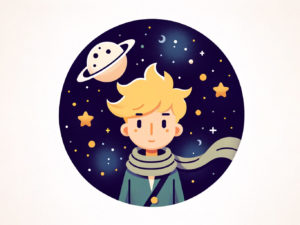 The prince’s own asteroid, B-612, is home to a single rose, whom he loves but has left behind. Seeking to understand love and responsibility, he journeys to Earth. Here, he meets more creatures, including a fox, who teaches him that the essential things are invisible to the eye.
The prince’s own asteroid, B-612, is home to a single rose, whom he loves but has left behind. Seeking to understand love and responsibility, he journeys to Earth. Here, he meets more creatures, including a fox, who teaches him that the essential things are invisible to the eye.
As the pilot repairs his plane, the prince tells of his plan to return home by allowing a snake to bite him. The story concludes with the pilot witnessing the prince’s serene yet sorrowful departure, leaving the reader to ponder the prince’s fate and the deep bonds formed.
Comprehensive Plot Summary of “The Little Prince”
Chapter 1
The narrator introduces himself as a pilot who, in his childhood, drew a boa constrictor digesting an elephant. Adults could only see a hat in his drawings, which discouraged him from becoming an artist. He laments that adults lack imagination and can’t see beyond the obvious.
Chapter 2
After a plane crash in the Sahara Desert, the narrator is trying to fix his plane with only eight days of drinking water supply left. Here, he is astonished when a small boy, the Little Prince, appears and requests him to draw a sheep.
Chapter 3
The narrator attempts several sheep drawings, but the prince rejects each one for various reasons. Finally, the narrator draws a box, claiming the sheep is inside, which satisfies the prince. Through their conversation, the narrator learns that the Little Prince comes from a small home planet which he refers to as Asteroid B-612.
Chapter 4
The Little Prince tells the narrator about his tiny home planet and his rose. He also speaks of his encounters with a king on the first planet he visited, who absurdly claims to rule over everything, including stars, and commands the prince to be his minister.
Chapter 5
The second planet the prince visits is home to a vain man who craves admiration and praises from everyone, including the prince. This encounter makes the prince ponder the odd behavior of adults.
Chapter 6
On the third planet, there is a drunkard who drinks to forget the shame of drinking. The prince is saddened by this circular reasoning and begins to see a pattern in the flawed behavior of grown-ups.
Chapter 7
Next, the prince visits a businessman who is obsessed with owning and counting the stars, claiming that he can use them to buy more stars. The concept of ownership perplexes the prince, who finds the businessman’s actions nonsensical.
Chapter 8
The fifth planet is the smallest, with just enough room for a street lamp and a lamplighter. The planet spins rapidly, requiring the lamplighter to light and extinguish the lamp every minute. The prince admires the lamplighter’s dedication to his task, unlike the previous adults he met.
Chapter 9
On the sixth planet, the prince encounters a geographer who records mountains, rivers, and cities but has never seen them himself. He considers explorers to be the ones who provide this information, and when the prince asks for a recommendation on where to go next, the geographer advises him to visit Earth.
Chapter 10
The Little Prince arrives on Earth in the African desert and is surprised by the lack of people. He encounters a snake that speaks in riddles and hints at its power to return him to his home planet, but the prince does not understand him.
Chapter 11
The Little Prince’s exploration of Earth continues. He is disappointed not to find any humans, but instead, he meets a snake. This snake speaks in riddles and hints at its power to send the prince back to the stars from whence he came. The prince is intrigued but does not understand the snake’s cryptic language.
Chapter 12
The prince climbs a mountain range and, hoping to find people, he calls out. His echo responds, which he mistakes for voices. He feels lonely and realizes that the Earth is far more desolate than he anticipated.
Chapter 13
The prince encounters a garden full of roses. He is saddened because he thought his own rose was unique. This encounter makes him question the uniqueness of his relationship with his rose.
Chapter 14
In this chapter, the prince meets a fox. The fox teaches him an important lesson: that which is truly important is invisible and can only be seen with the heart. He also learns about the process of “taming” and how it creates bonds that make others unique and special.
Chapter 15
The Little Prince tames the fox, and they form a deep friendship. When it is time for the prince to leave, the fox shares his secret: “It is only with the heart that one can see rightly; what is essential is invisible to the eye”.
Chapter 16
The prince meets a railway switchman who tells him about how adults rush from one place to another aboard trains, never satisfied with where they are and not knowing what they are seeking. The prince ponders on the strange behavior of adults.
Chapter 17
Next, the prince encounters a merchant who sells pills that quench thirst and save time. The prince is puzzled by this, as he enjoys the ritual of drinking water and sees no need to rush through life.
Chapter 18
The narrator reflects on the prince’s travels and his observations of the absurdities of adult behavior. He also recalls his own experiences and muses on the nature of human relationships.
Chapter 19
The prince prepares for his return to his home planet. He explains to the narrator that his body is too heavy to take with him and that it will appear as if he has died when he allows the snake to bite him.
Chapter 20
The narrator describes the prince’s serene and sorrowful departure. The prince allows the snake to bite him, falling gently to the ground, his body left behind as he presumably returns to his asteroid and his beloved rose.
Chapter 21
In the final chapter, the narrator is left alone in the desert, his plane repaired. He is deeply moved by the prince’s disappearance and reflects on the beauty and simplicity of the prince’s outlook on life. He pleads with the readers to look out for the prince and to comfort him with news of the prince’s return.
Chapter 22
The narrator finishes his tale, lamenting the loss of his friend. He expresses hope that the Little Prince has returned to his asteroid and his rose. The story closes with the narrator’s request to the readers: If they ever spot a child with golden hair who laughs and refuses to answer questions, they should immediately write to him, as it will mean his friend has returned.
Characters Overview
The Little Prince
The protagonist of the story, a young boy of profound philosophical insights who travels from his own asteroid to various other planets, including Earth. His perspective is innocent and insightful, and he is on a quest for knowledge, understanding, and love. He symbolizes the openness of children to the mysteries of life, untainted by the cynicism of adults.
The Pilot/Narrator
The narrator of the story, whose plane crash in the Sahara desert leads to his encounter with the Little Prince. He is a semi-autobiographical character representing Antoine de Saint-Exupéry himself, reflecting on the strangeness of adult behavior and the loss of childhood innocence. He is a sympathetic figure who forms a deep bond with the Little Prince.
The Rose
A unique flower on the Little Prince’s asteroid, whom he cares for and loves deeply. The Rose is a complex character who represents love, beauty, and, at times, vanity. Her relationship with the Little Prince is fraught with drama and tenderness, illustrating the complications and depth of caring for another.
The Fox
A wise character the Little Prince meets on Earth, who teaches him the importance of relationships and the idea that “one sees clearly only with the heart.” The Fox’s lesson on taming and creating bonds is a central moral of the story, emphasizing the value of intimate connections over superficial ones.
The Snake
A mysterious and enigmatic character that the Little Prince meets upon his arrival on Earth. The Snake speaks in riddles and has the power to send the Little Prince back to his asteroid by biting him. It represents both the destructive and the transformative forces of nature.
The King
One of the first adults the Little Prince encounters on his travels. The King claims to rule over everything, including the stars, with a comical and misguided sense of authority. He symbolizes the absurdity of power and the human desire to control.
The Vain Man
Residing on the second planet the Little Prince visits, this man is fixated on admiration and flattery. He portrays the human flaw of vanity and the need for external validation.
The Drunkard
A character who continuously drinks to forget the shame of drinking. The Drunkard represents the vicious cycle of addiction and the human tendency to hide from one’s problems rather than confront them.
The Businessman
Obsessed with owning and counting stars, the Businessman symbolizes greed, materialism, and the misguided value placed on quantifying and possessing.
The Lamplighter
A dutiful man who lights and extinguishes his planet’s lamp every minute, the Lamplighter represents dedication, purpose, and the absurdity of blindly following orders without questioning them.
The Geographer
An academic who records the geography of his planet but has never seen any of it himself. He represents the folly of placing value only on knowledge that can be documented, and the disconnect between theoretical knowledge and real-world experience.
Interesting Facts About The Author And The Tale
Author’s Background:
- Antoine de Saint-Exupéry was a French aviator and writer.
- His experiences as a pilot greatly influenced his writing.
Publication:
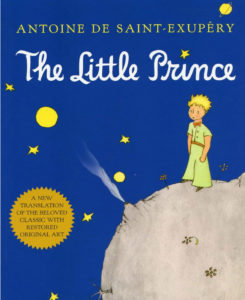 “The Little Prince” was first published in 1943.
“The Little Prince” was first published in 1943.- It has been translated into over 300 languages and dialects.
The Story’s Origins:
- Saint-Exupéry wrote “The Little Prince” while living in New York, exiled during World War II.
- The story reflects his own life experiences and philosophies.
Characters Inspired by Real Life:
- The rose in “The Little Prince” is said to be inspired by Saint-Exupéry’s wife, Consuelo.
- Some believe that the narrator of the story, the pilot, is a representation of the author himself.
Symbolism and Themes:
- The story is rich in allegorical elements and explores themes such as innocence, love, loss, and the search for meaning in life.
- Different characters represent various aspects of society, like the businessman symbolizing greed.
Legacy and Influence:
- “The Little Prince” is one of the best-selling books ever published.
- The story has been adapted into various forms, including opera, ballet, films, and a Netflix series.
Mysterious Disappearance of the Author:
- Saint-Exupéry mysteriously disappeared over the Mediterranean on a reconnaissance mission in 1944, a year after the publication of “The Little Prince.”
- Some parts of his aircraft were recovered many years later.
Cultural Impact:
- The story is celebrated in art, music, and popular culture worldwide.
- There are museums dedicated to “The Little Prince,” such as the Little Prince Museum in Hakone, Japan.
Asteroid B-612:
- The home of the Little Prince, Asteroid B-612, has become a metaphor for seeing the world through the eyes of a child.
- There is an actual asteroid named “B-612” in honor of the story.
Educational Use:
Philatelic Tribute:
- Many countries have issued postage stamps commemorating “The Little Prince” and its author.
Frequently Asked Questions About “The Little Prince”
What is the deeper meaning of “The Little Prince”?
“The Little Prince” delves into themes of innocence, human nature, the complexity of relationships, and the search for meaning in life. It contrasts the perspectives of children and adults, emphasizing the importance of imagination, love, and introspection.
Who is the target audience of “The Little Prince”?
While it is often categorized as a children’s book, “The Little Prince” is written for all ages. Its layered storytelling appeals to children’s sense of wonder and adults’ capacity for self-reflection, making it a universal read.
Why did the Little Prince leave his planet?
The Little Prince left his asteroid, B-612, to explore other worlds and gain insights. His journey is sparked by feelings of misunderstanding and a desire to understand the complexities of love and friendship.
What does the rose symbolize in “The Little Prince”?
The rose symbolizes love, beauty, and uniqueness. It represents the object of the Little Prince’s affection and his realization of the effort and responsibility involved in loving another being.
How does “The Little Prince” address the concept of adulthood?
The novel portrays adults as being preoccupied with matters of consequence, often losing sight of what’s truly important—things that can only be perceived with the heart, such as feelings, imagination, and the simplicity of life.
What is the significance of the water in “The Little Prince”?
Water symbolizes life, sustenance, and spiritual nourishment. It is essential but taken for granted, much like many beautiful experiences in life that adults often overlook in their quest for more tangible achievements.
How does the story of “The Little Prince” end?
The story ends with the Little Prince’s mysterious return to his asteroid. He leaves his physical form on Earth after being bitten by the snake, which is a metaphorical representation of returning to a state of innocence and “home” beyond the physical world.
What lessons does the fox teach the Little Prince?
The fox teaches the Little Prince about the beauty of relationships and the process of “taming” or creating bonds. He imparts the wisdom that one only truly understands the value of a person or thing once they have formed a close, loving relationship.
My Personal Review
“The Little Prince” is a masterpiece that transcends the boundary of a children’s book to offer profound insights into love, loss, and human nature. Its succinct narrative is elegantly layered, allowing each character to embody deep philosophical meanings, while the storytelling remains as accessible as it is poetic. Antoine de Saint-Exupéry has crafted a world where every conversation is a mirror to our own reality, reflecting the essence of what it means to be truly human.
🌟 Jump into the conversation and tell us: Is “The Little Prince” an interstellar journey of genius, or is Saint-Exupéry just peddling cosmic snake oil? Sound off in the comments! 🚀💬

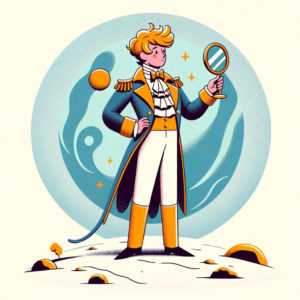
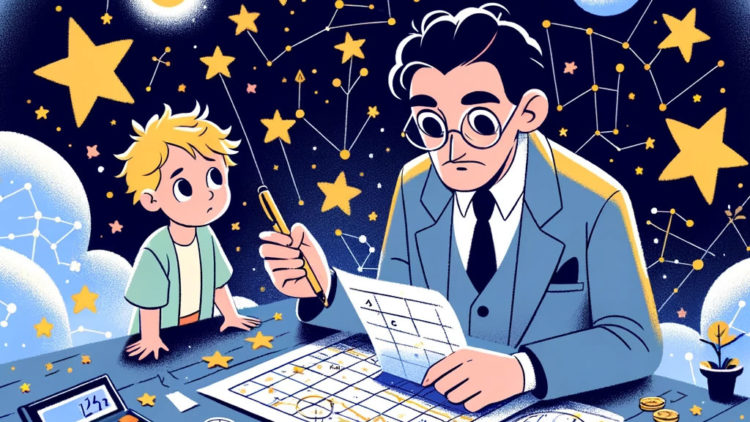
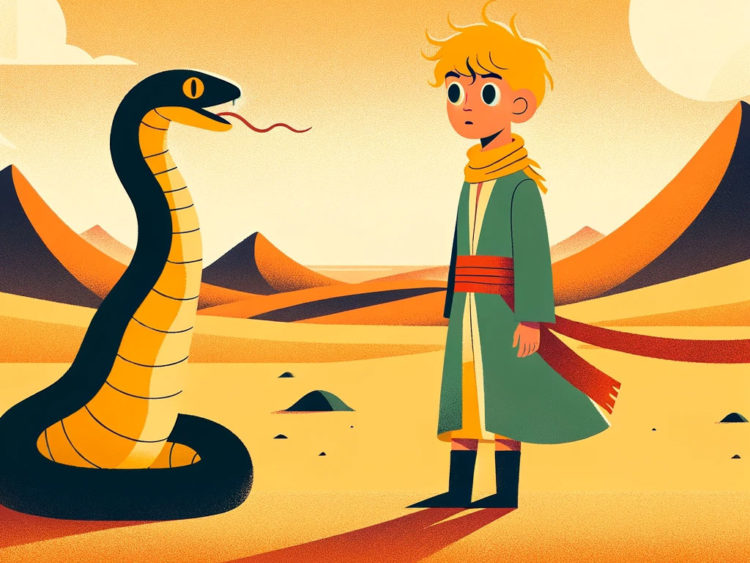
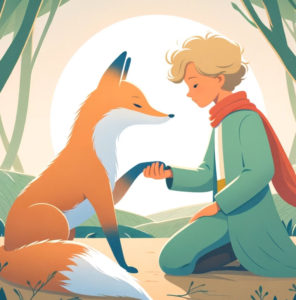
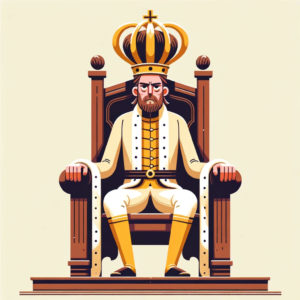
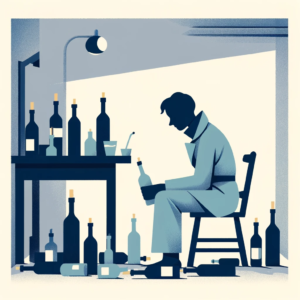
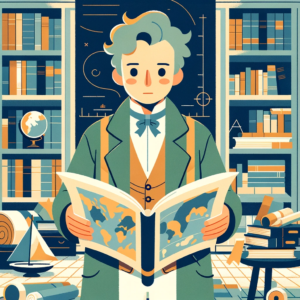
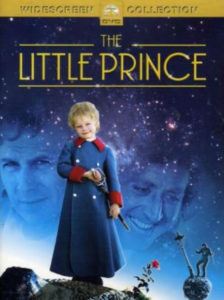
Comments